Polar TREC is in Antarctica
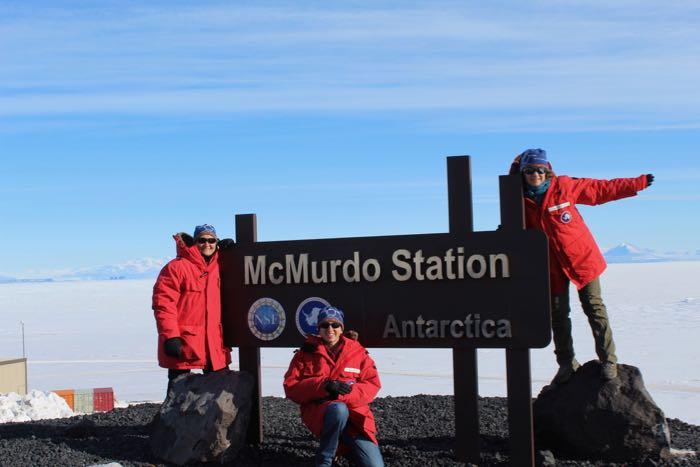 Antarctica- McMurdo Station-2019 Polar TREC Teachers Denise Hardoy, Bridgette Ward, and Amy Osborne
Antarctica- McMurdo Station-2019 Polar TREC Teachers Denise Hardoy, Bridgette Ward, and Amy Osborne
It is unusal to have more than one Polar TREC teacher in the field at the same time and place as other teams. This year, three projects aligned in both location and time...to put the three of us at McMurdo Station. We are happy to have each other's support, while still concentrating on our own projects and teams.
Bridgett's Amazing Baby Seals
As today is Sunday here, our team took the day off from working in the lab or diving for fish. So.... I bring you greetings from my fellow Polar TREC teacher Bridgette Ward. You should totally check out her journal on the Polar TREC website too!
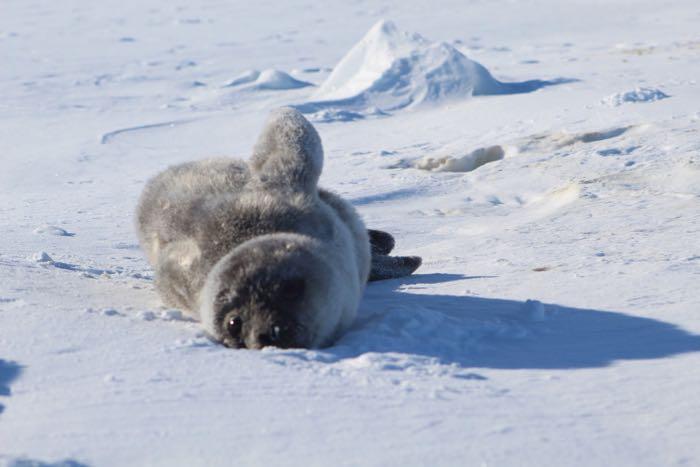 Newborn seal pup - Photo by Bridgette Ward Taken under ACA Permit number 2018-013 M#1 MMPA Permit Number 21006-01
Newborn seal pup - Photo by Bridgette Ward Taken under ACA Permit number 2018-013 M#1 MMPA Permit Number 21006-01
Bridgette's team is led by Dr. Heather Liwanag from Cal Poly State University. They are studying how baby seals get so good at diving so quickly. Taken under ACA Permit number 2018-013 M#1 MMPA Permit Number 21006-01
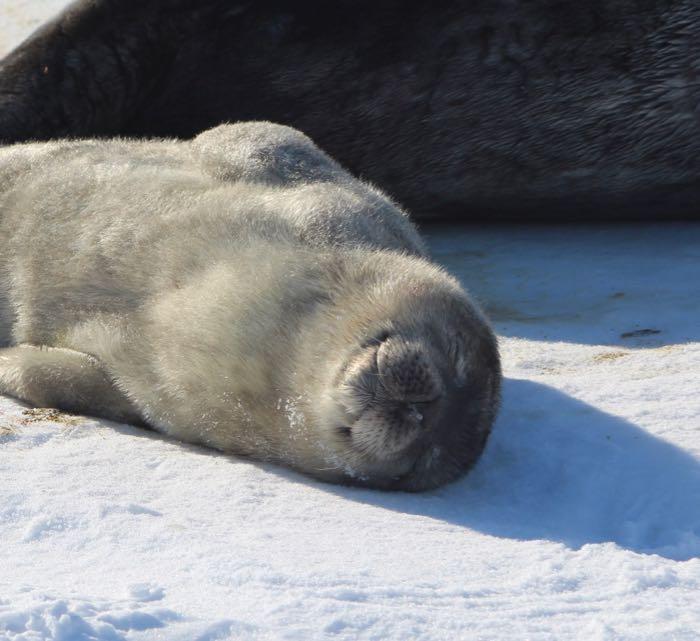 Taken under ACA Permit number 2018-013 M#1 MMPA Permit Number 21006-01
Taken under ACA Permit number 2018-013 M#1 MMPA Permit Number 21006-01
They have a special permit to do this research. Not very many people have a chance to see these adorable seals up close.
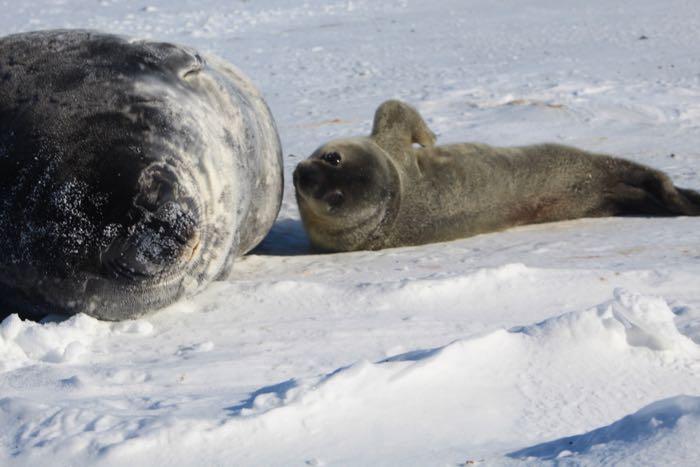 Taken under ACA Permit number 2018-013 M#1 MMPA Permit Number 21006-01
Taken under ACA Permit number 2018-013 M#1 MMPA Permit Number 21006-01
These moms can weigh up to 1200 pounds and their pups weigh about 60 lbs when they are born.
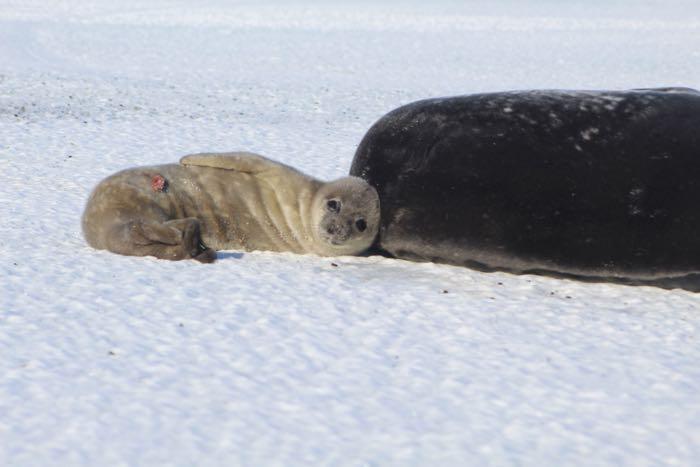 Taken under ACA Permit number 2018-013 M#1 MMPA Permit Number 21006-01
Taken under ACA Permit number 2018-013 M#1 MMPA Permit Number 21006-01
The pups grow quickly on mom's rich milk and are ready to wean at about seven weeks.
How we get Around
I have had lots of questions about what vehicles we drive around Antarctica. We use a variety of vehicles, depending on how many people need to be moved,where we are going, and the weather conditions.
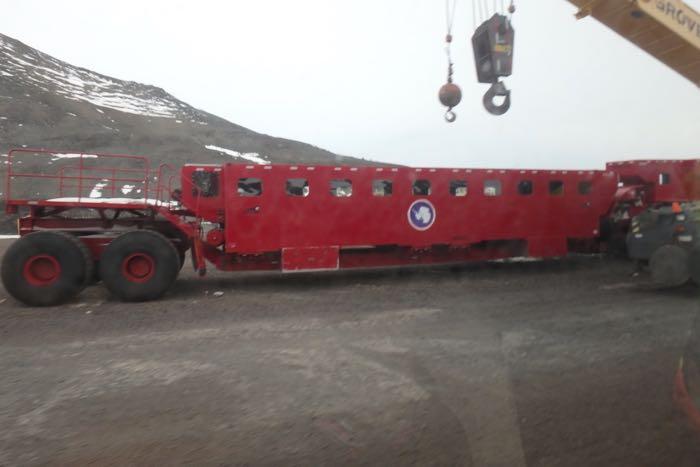 This vehicle moves the largest number of people from the airfield to Mc Murdo Station- about an hour drive
This vehicle moves the largest number of people from the airfield to Mc Murdo Station- about an hour drive
This is the vehicle that carries all the passengers and their cargo from the big C-17 airfield, to Mc Murdo.
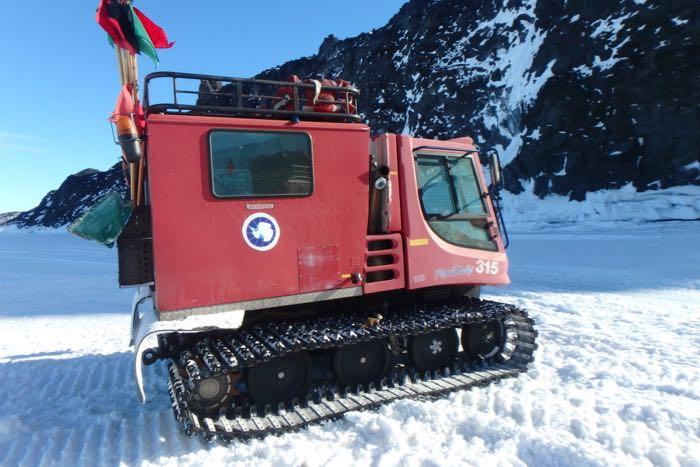 A Piston Bully for getting a group of people around in bad weather.
A Piston Bully for getting a group of people around in bad weather.
Weight and track length play an important role on vehicle choice when going out on the sea ice. The Piston Bullies are heavy, but they have a long track length that can cross cracks in the ice up to 91 cm wide. They are nice and warm inside, and can hold our whole team. Unfortunately, they are super slow.
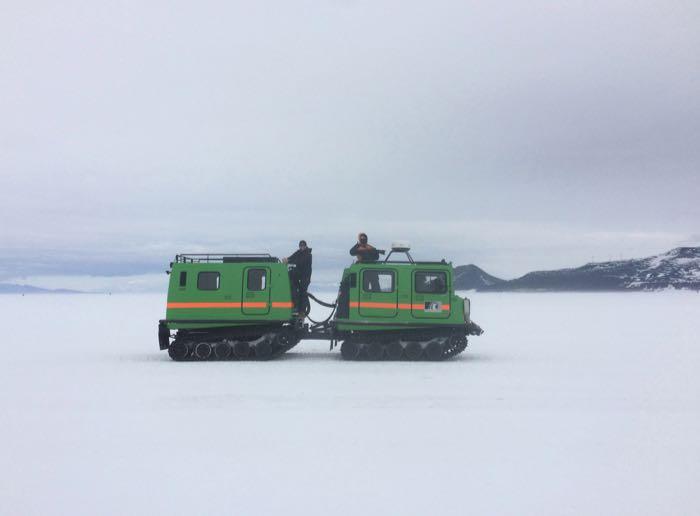 Photo by Byron Adams, Courtesy of Joshua Heward (PolarTREC 2016), Courtesy of ARCUS
Photo by Byron Adams, Courtesy of Joshua Heward (PolarTREC 2016), Courtesy of ARCUS
Hagglunds are another way to move a team of people. We don't have as many of these, and their track length is a little shorter.
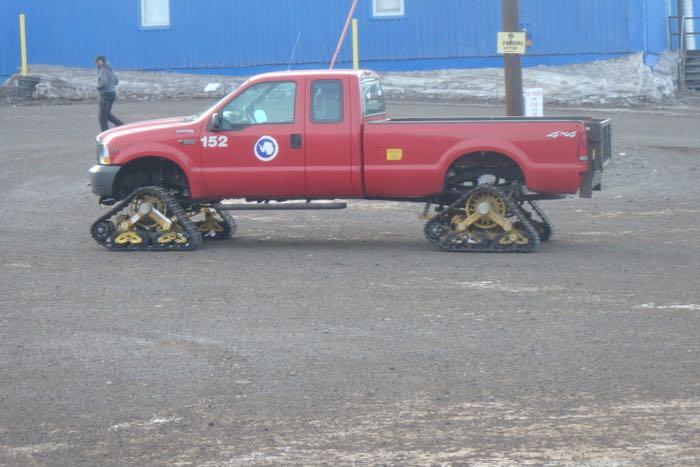 Mattrax designed for lightweight use in the snow and on the sea ice
Mattrax designed for lightweight use in the snow and on the sea ice
These mattrax are very specialized vehicles. They do well on sea ice. They are light by comparison, but have a short track length. This makes it hard to cross any substantial cracks.
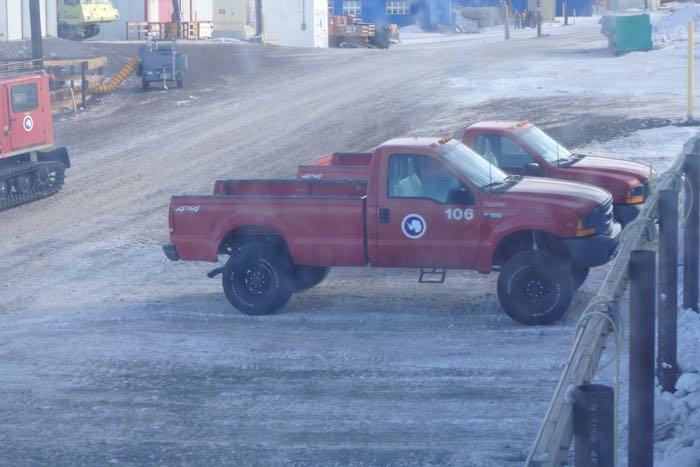 McMurdo Pickups
McMurdo Pickups
We also have regular pickups with heavy duty tires. These are great for around town and on snow covered land, but not the sea ice.
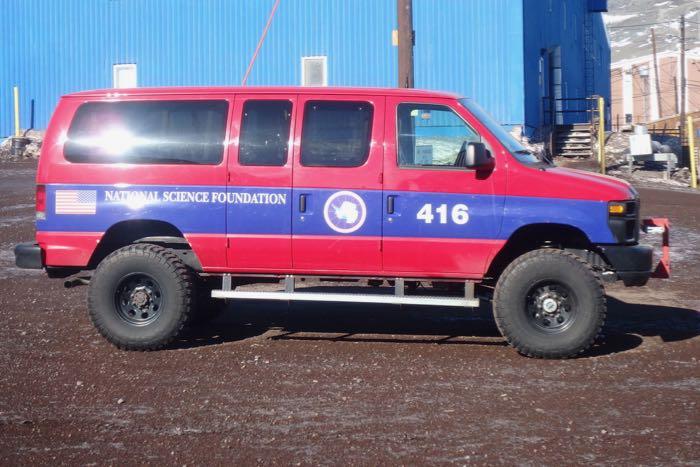 We Use shuttles to get up to 12 people around on the main roads around McMurdo
We Use shuttles to get up to 12 people around on the main roads around McMurdo
These shuttles are used for transporting up to 12 people at a time. They are driven by volunteers to take up over to the Kiwi Station. They also cannot go on the sea ice.
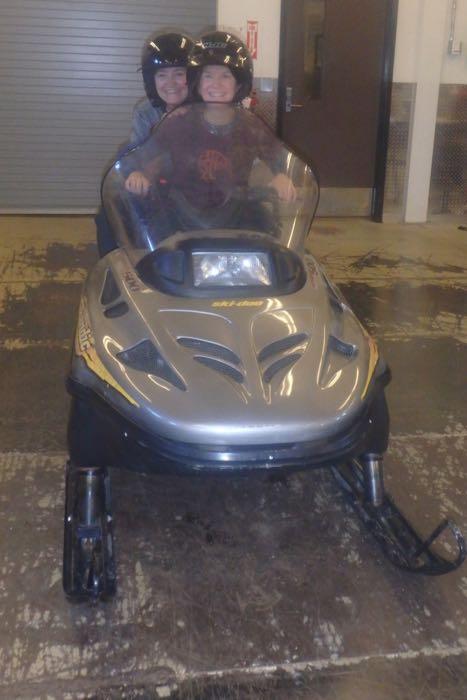 Denise and Amy on a SnoMo during training.
Denise and Amy on a SnoMo during training.
Snowmobiles are the lightest weight choice. They are quick, but miserable if it is really windy.
We also have a wide variety of heavy equipment- Challengers, backhoes and huge forklifts. Then there are the smaller airplanes and even a few helicopters. It takes a lot of equipment and vehicles to get everyone where they need to go. Mc Murdo is a staging ground for expeditions into the deep field- like the Dry Valleys, and even the South Pole.
Shout Out
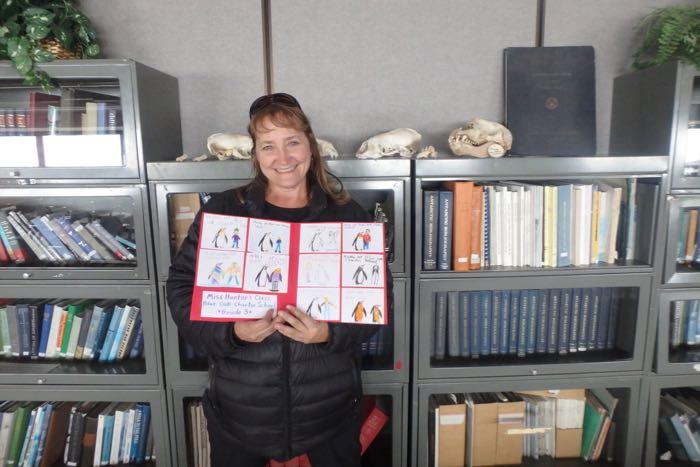 Blue Oak Charter School's Miss Hunter's 3rd Grade Class
Blue Oak Charter School's Miss Hunter's 3rd Grade Class
Today's shout out goes to Miss Hunter's cool class of third graders from Blue Oak Elementary in Chico, California. Thanks for following my journals! I'll take good care of your Antarctic penguins and get them back to you soon.
Stay Cool,


Comments
Add new comment